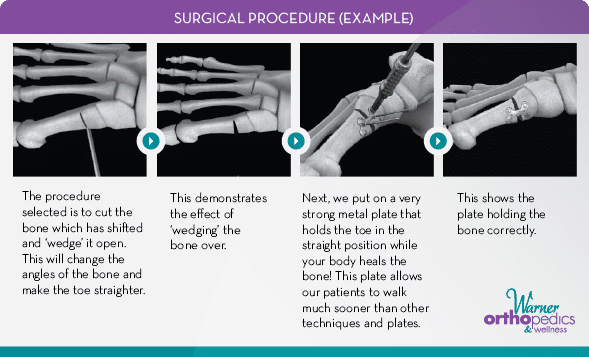How to Know if You Have a Bunion

A bunion is a painful lump that forms at the main joint of the large toe. A bunion develops when the toe begins to lean in toward the other toes, pushing against them and displacing the toe joint. Although the lump may look like a growth, it’s actually the end of the first toe’s long bone that has shifted out of its normal location, causing a bunion. A ‘bunion’ is an angular deformity of the long bone of the foot and the bones that form the actual toe. What is seen as a ‘bunion’ is simply the ends of two bones that are out of alignment.
Although the lumpy appearance is the telltale characteristic of a bunion, there are other conditions that can mimic a bunion, including a fracture, arthritis or other inflammation. But there are several risk factors that make it more likely that the lump you’re seeing is, indeed, a bunion:
- Genetics. There is evidence that people whose family members have bunions may also be more likely to develop them. One recent study found people of European descent are more likely to develop a bunion than people from other areas of the world. What’s more, hereditary disorders like Marfan syndrome, Ehlers-Danlos syndrome or Down syndrome are also associated with an increased risk of bunion formation. These are conditions that increase laxity in the supportive soft tissues of the foot. Loose supporting tissues allow a joint to deform more easily.
- Gender. Although both men and women can have a bunion, the condition tends to be seen more often in women, for unknown reasons. However, it may also be that women simply present to physician’s with this complaint more than men do.
- Abnormal walking mechanics. If you have low arches or “flat feet,” or if you roll your foot while walking or running, you’re more likely to develop a bunion, compared to someone who has “normal” arches or keeps the foot level when walking. The good news is, there are plenty of products like inserts and special footwear to help correct these problems and avoid development of a bunion. Having your feet and gait analyzed are important, especially if your family has a history of bunion formation. People with high arches do get bunions as well. It is possible that those with flatter feet may simply have looser joints in the foot as well; this contributes to the deformity.
- Ill-fitting footwear. Narrow shoes, high heels and shoes with narrow toes can all contribute to the symptoms of a bunion by increasing the pressure over the big toe joint. Avoiding shoes with tight toe areas and avoiding or limiting the use of high heels can help prevent a bunion from causing pain. It is likely that bunions are genetic and not actually caused by such shoes. Nonetheless, if a shoe places pressure on a bunion and that increases the pain, this shoe should be avoided until the bunion is corrected.
- Joint disorders. People with osteoarthritis or rheumatoid or psoriatic arthritis are also more likely to develop a bunion. Care should be taken not to assume toe pain is strictly attributable to arthritis; many people find their “arthritis” discomfort is remedied after diagnosis and correction of a bunion. An arthritic toe joint may be enlarged and deformed and confused as a true bunion. The treatment of a bunion in in the setting of any type of arthritis is more complicated and the underlying cause of the arthritis must be considered.
- Job or lifestyle factors. People whose jobs require extended periods of standing, such as factory workers or teachers, may also be more likely to develop pain from a bunion. Ballet dancers and soccer players place considerable stress on their toes and foot joints, and runners and other athletes who wear improperly-fitted footwear also tend to develop a more painful bunion than those whose occupations are less stressful to the feet. Again, it is not that the job or exercise is causing the bunion, rather that it is simply making it hurt more.
The bottom line is this: Whether you have any of these risk factors or not, if you suspect you have a bunion, you should have your foot evaluated as soon as possible so the condition can be treated. Don’t be tempted to treat a bunion yourself; home remedies can wind up making a bunion much worse. Plus, having your foot evaluated can help ensure that what you’re dealing with is a bunion and not some other condition that causes symptoms similar to a bunion. Many bunions are progressive and will increase in size over time.
Sources
http://www.acfaom.org/information-for-patients/common-conditions/bunions
http://www.webmd.com/news/20130520/many-can-blame-family-for-their-bunions
{{cta(‘5bdf3d7d-fe06-4fff-814a-274edbdda674’)}}




